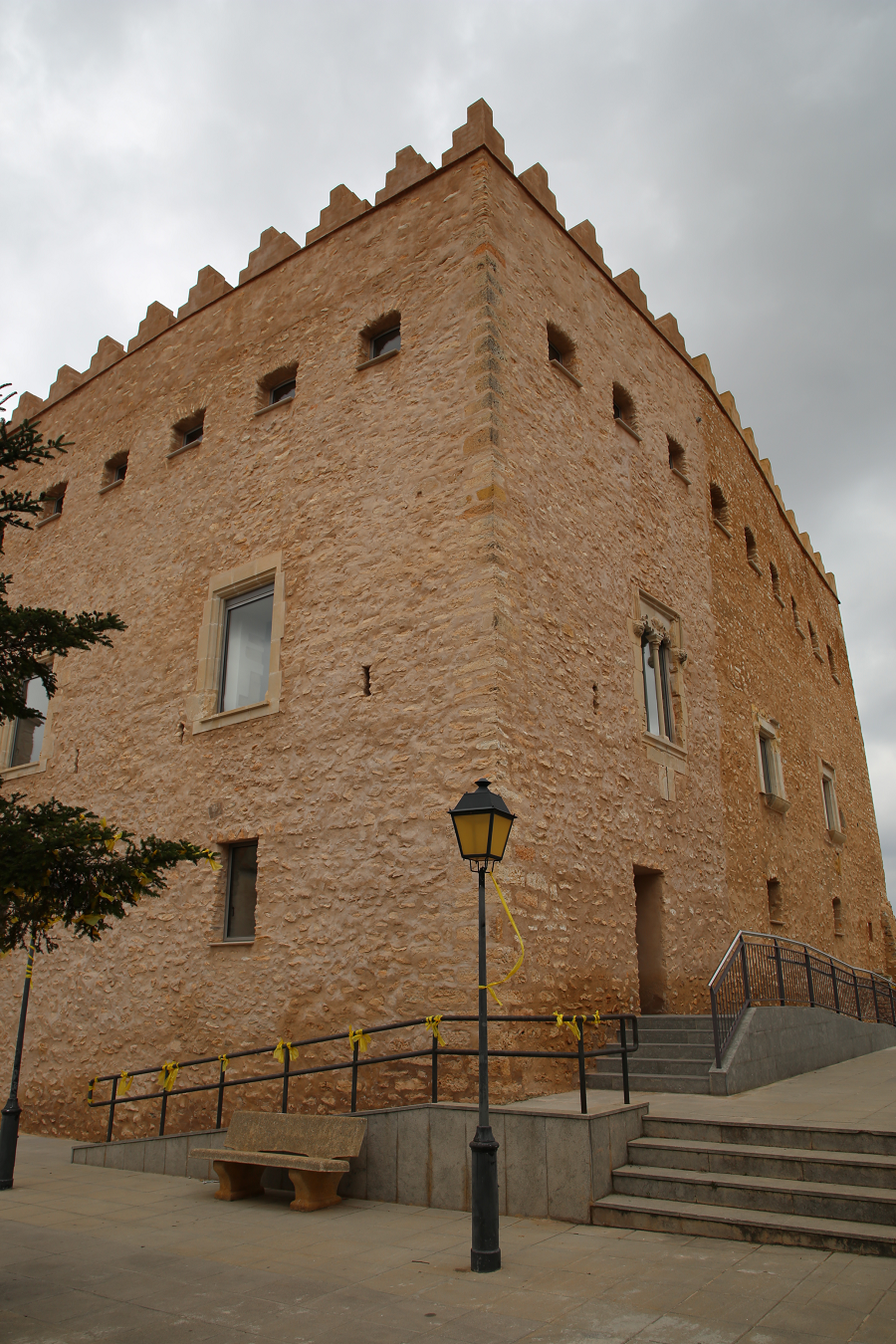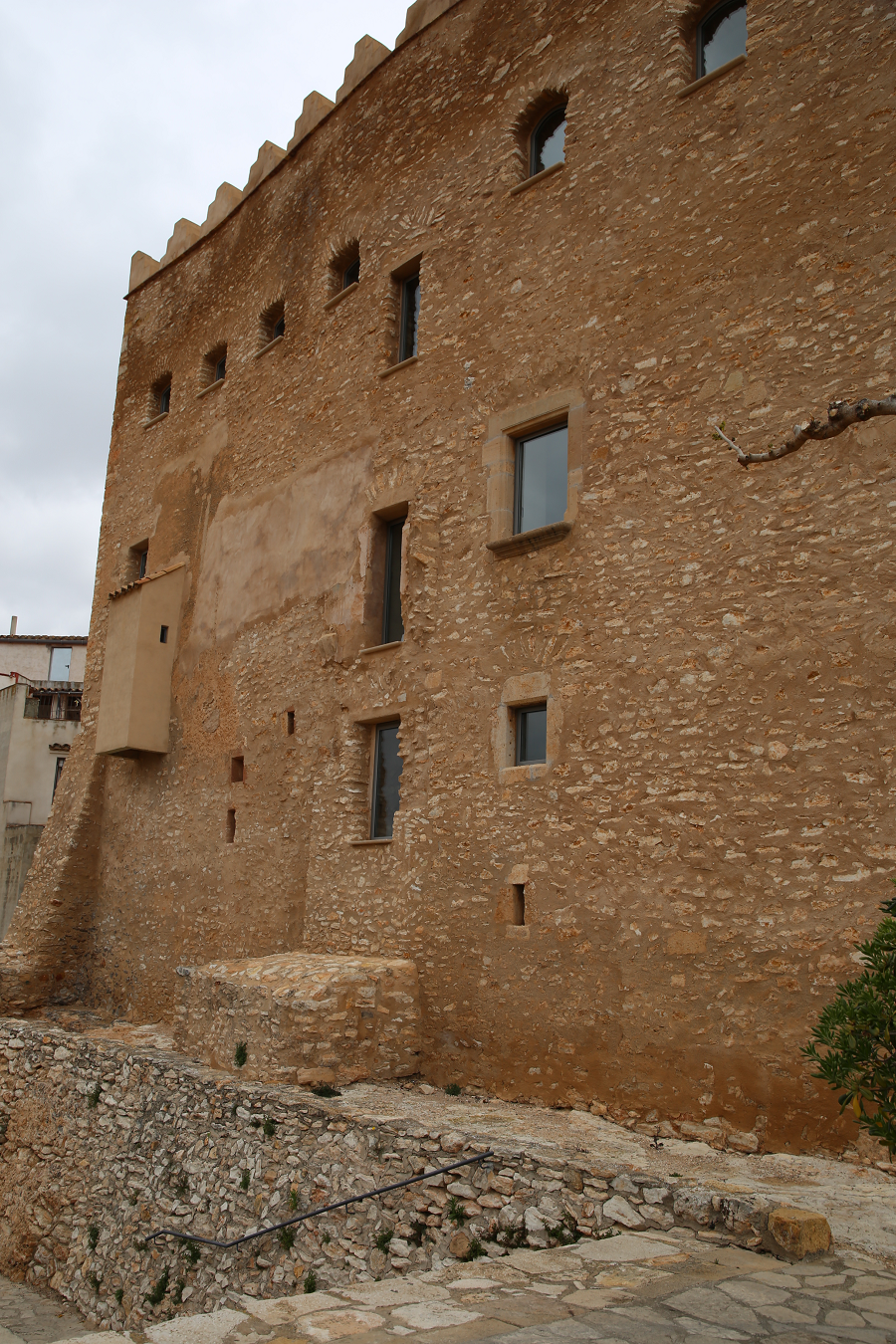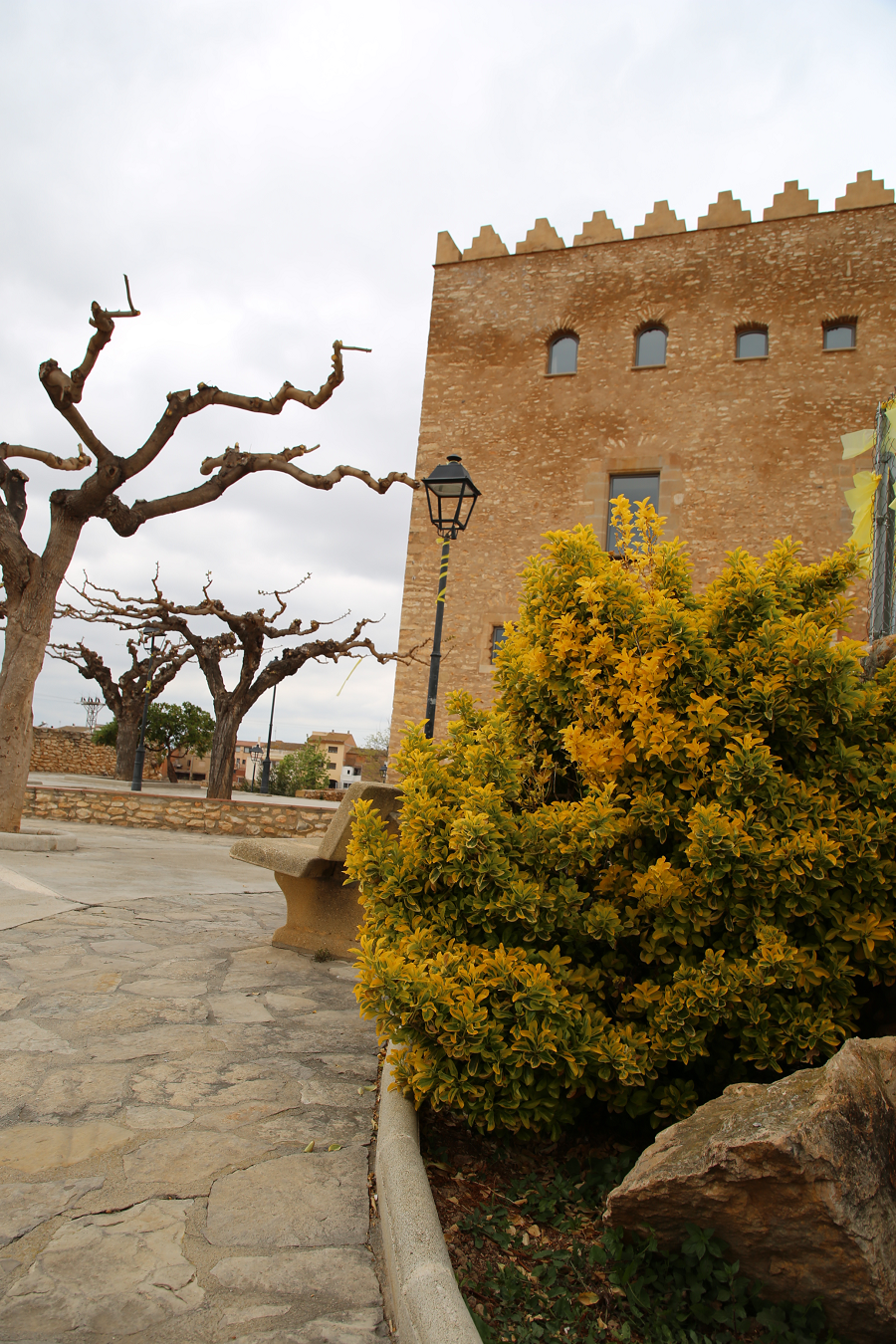Rodonyà Castle (El Castell de Rodonyà) is a monument protected as a cultural asset of national interest, in the municipality of Rodonyà (Alt Camp), Tarragona province, Catalonia, Spain.
The castle is located in the center of the town, near the church. It is a stone building of large proportions and quadrangular floor plan.
Its external structure is still in good condition. There are two types of windows, those on the top floor, that are of small dimensions aligned horizontally, and those that are at the height of the first floor, which are larger and from a different period, some of them framed with stones.
The access door has a semicircular arch with radially arranged stone voussoirs. The building is crowned by battlements. The demolished state of the interior, at present, makes it difficult to describe it. Several arches are conserved in the lower part.
The existence of the castle seems likely since the beginning of the 13th century. Although the first well documented reference to it date from 1310, the year in which the Archbishop of Tarragona Guillem de Rocabertí bought it from Bernat de Centelles for 60000 sous.
At that time, it was inhabited by Ramon de Tamarit, who paid tribute to the Archbishop in 1311. In 1409 Bernat de Tamarit became Baron of Rodonyà, as he bought the jurisdiction of the place from the king. Towards 1868, the castle was sold by Gaietà de Vilallonga and Tamarit to one of the village inhabitants. At that moment, it was already in a bad state. In 1919, the City Council bought the building. Subsequently, it was used as a school.
In 2011, the second phase of restoration was completed, aimed at the integration of the monument to the urban space, making it the seat of the future Casa de la Vila and the main tourist attraction. During this operation, seven medieval silos were discovered.
The third and final phase got stuck for some years due to a lack of funding, and finally, the final phase took place in 2016. In addition to the city council, the municipal library and facilities will also be established there.

















